Christmas in Barcelona has a different flavour. Before relocating here, I used to live in Northern Europe. Christmas was cold and sometimes white, like in the song. Then I moved to Barcelona and had a different experience.
You already know from reading some of my posts that Barcelona and Catalonia have their twist on global celebrations.
Sant Jordi is more celebrated than Valentine’s day. The Castanyada is more popular than Halloween. Christmas also has features that make it special here.
I have never celebrated Christmas with a Catalan family. But the customs are so ingrained that even if you are not a local, you become familiar with them.
Christmas in Barcelona
Christmas lights in Barcelona
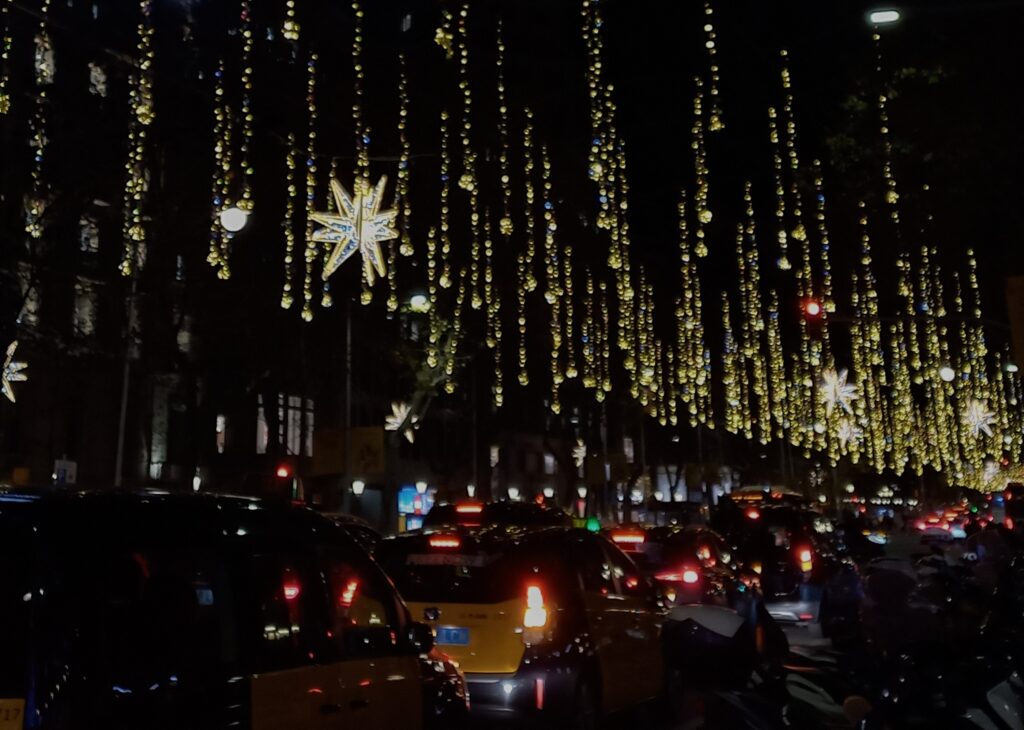
Christmas in Barcelona starts when Halloween is over! Indeed, then all the shops start to sell Christmas stuff. Ok, I am exaggerating a little.
The Christmas season in Barcelona begins when the Christmas lights are put up. This year, they were turned on on November 24th. They will be there through January 6th.
The most striking illuminations are the ones on Passeig de Gracia and the ones on Plaza Catalunya, especially with the main department store displaying huge graphic Christmas decorations.
Having lived in Ireland where Christmas is almost overdone, I used to find Christmas in Barcelona quite dull – no Christmas songs everywhere, not many Christmas lights and decorations …
However in the past years, Barcelona stepped up its game. And now, the event of switching the lights on has a prominent place in the city’s calendar.
Additionally, there are some new Christmas events in the city, like the Christmas light show in Sant Pau. Check it out!
Christmas food
Then you have the Christmas food. Yes, Christmas won’t be Christmas if we do not talk about the food.
Turrón
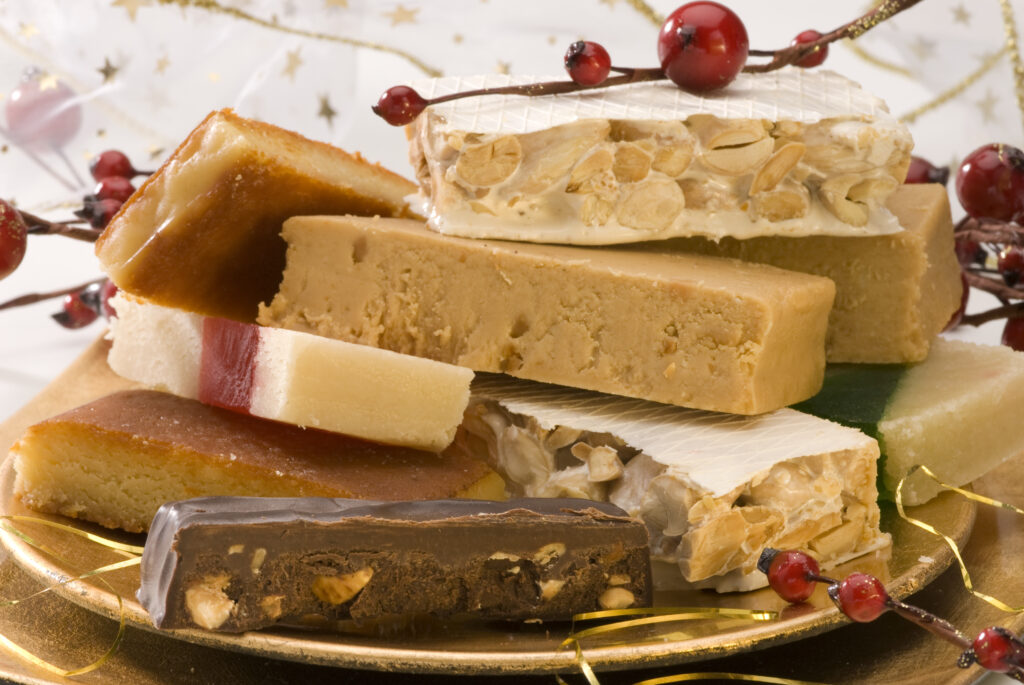
Invented by the Moors, the turrón is a nougat confection typically made of honey, sugar, and almonds. It is traditionally consumed as a Christmas dessert in Spain and other Southern countries.
Today, turrón comes in a variety of forms. I tried several types of turrón since I have lived in Spain. I prefer the classic hard ones. And I am not very fond of the ones made with egg yolk in terms of texture and flavour.
And you? Which one is your favourite?
The “canelones”
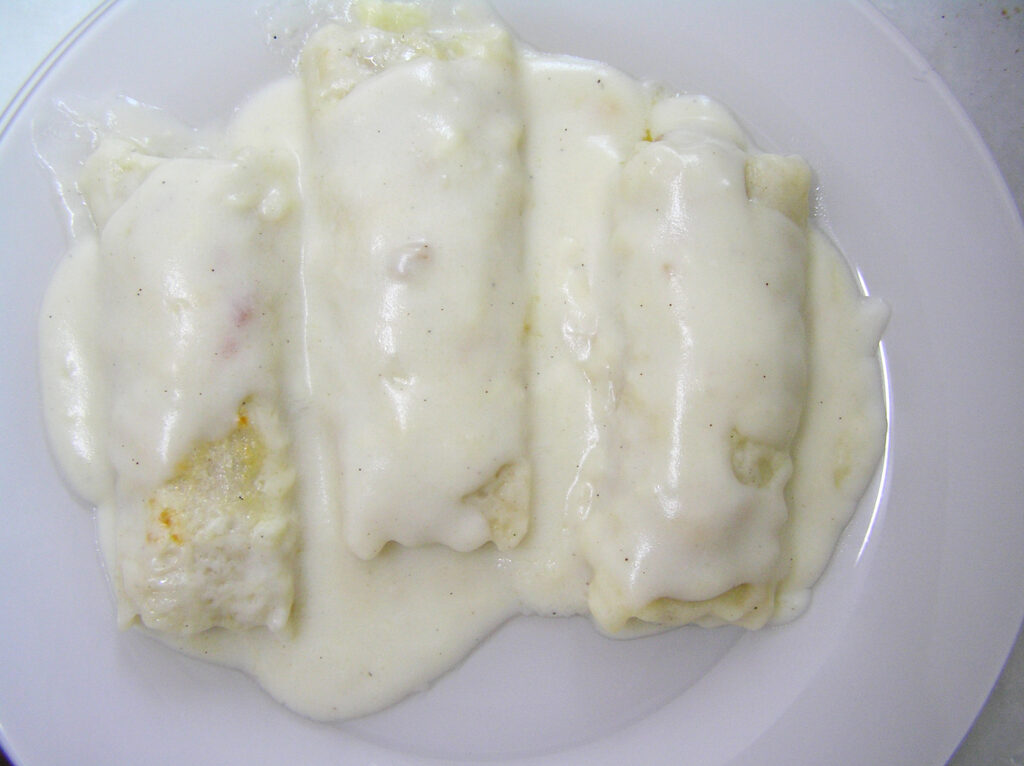
The canelones (stuffed pasta that visually resembles Canneloni) are typically eaten on Boxing Day (December, 26th) in Catalonia although you can find them all year long.
They are usually stuffed with leftover meats from Christmas. A lot of restaurants and catering services offer them on their menu on the days preceding Christmas as well. This is one of my favourite Catalan dishes.
The “sopa de galets”
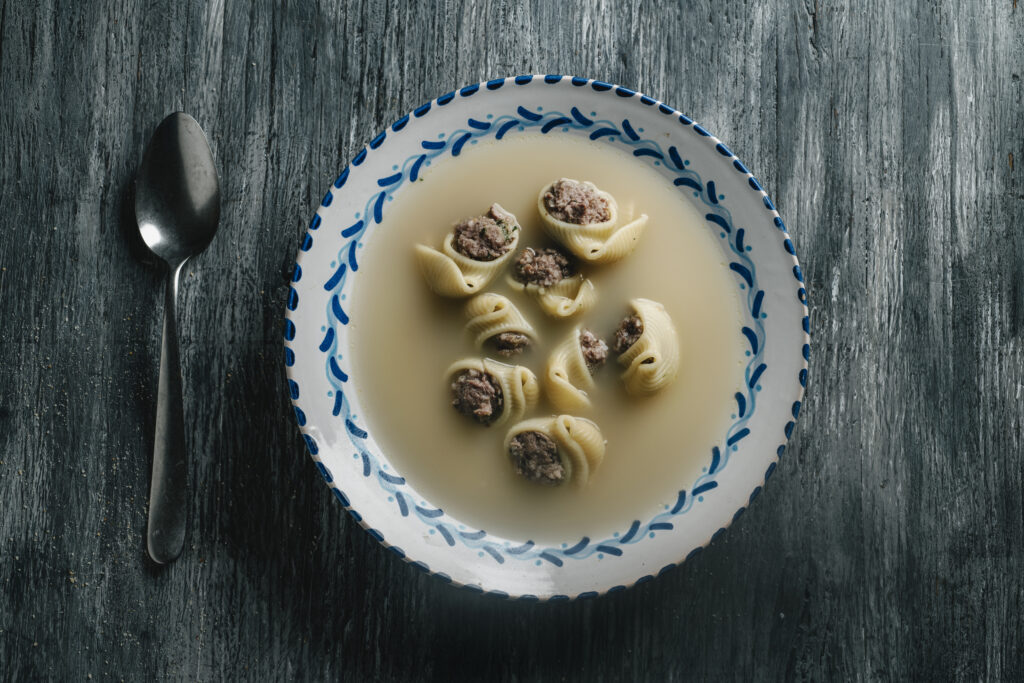
The “sopa de galets” is a festive soup made with broth and “galets” which are large shell-shaped pasta filled with meatballs. It is super delicious.
Where to try both the canelones and the sopa de galets
I have tried both the “canelones” and the “sopa de galets” for the first time at Espai Vida in Cornella de Llobregat. They are a staple in their Christmas menu. They are super nice there, this is why this place is my reference. It is not in Barcelona city center though.
Espai Vida, Carrer del Valles, 173, 08940 Cornella de Llobregat
The Christmas markets
If you are used to visiting Northern European Christmas markets – I visited ones in England, Ireland, Paris, and Budapest for instance – the ones in Barcelona are quite different. They are more focused on Holiday decorations, especially around the Nativity scenes.
My favourite Christmas markets
Fira de Santa Llucia
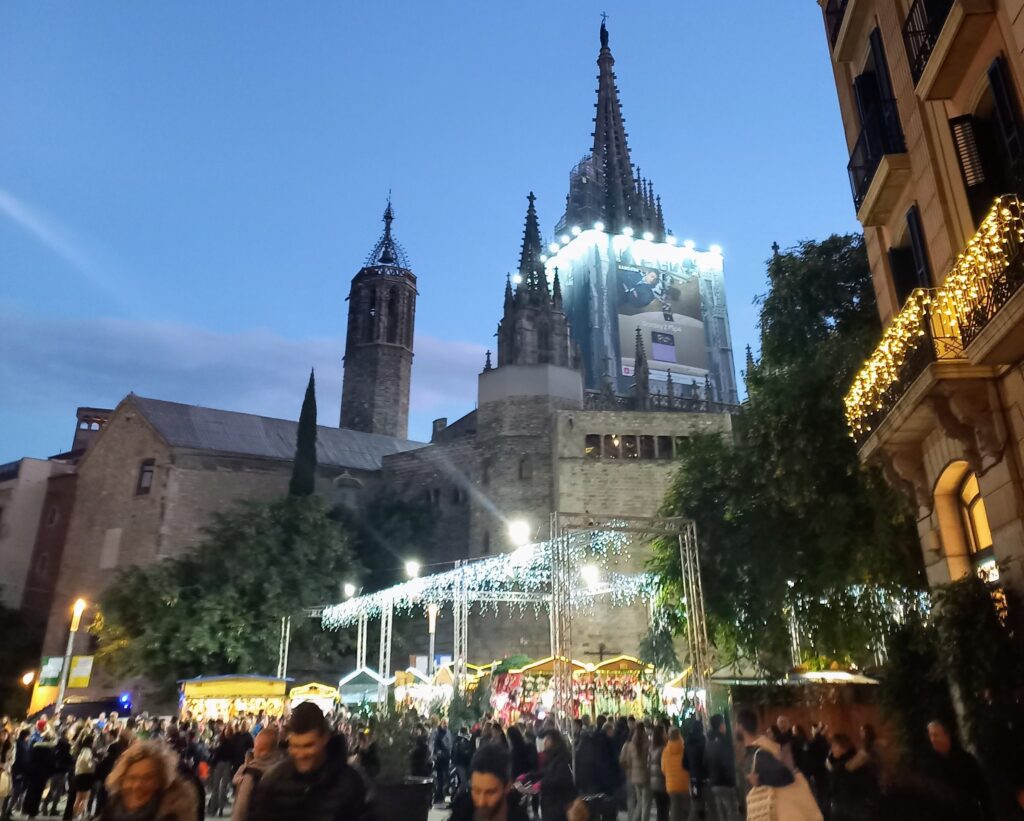
This fair dates back to 1786 and has always been held in the Avinguda de la Catedral de Barcelona. It is on from November 25th to December 23rd.
The market is usually quite busy and crowded but you have varied booths selling Christmas decorations and gifts.
Fira de Nadal de la Sagrada Familia
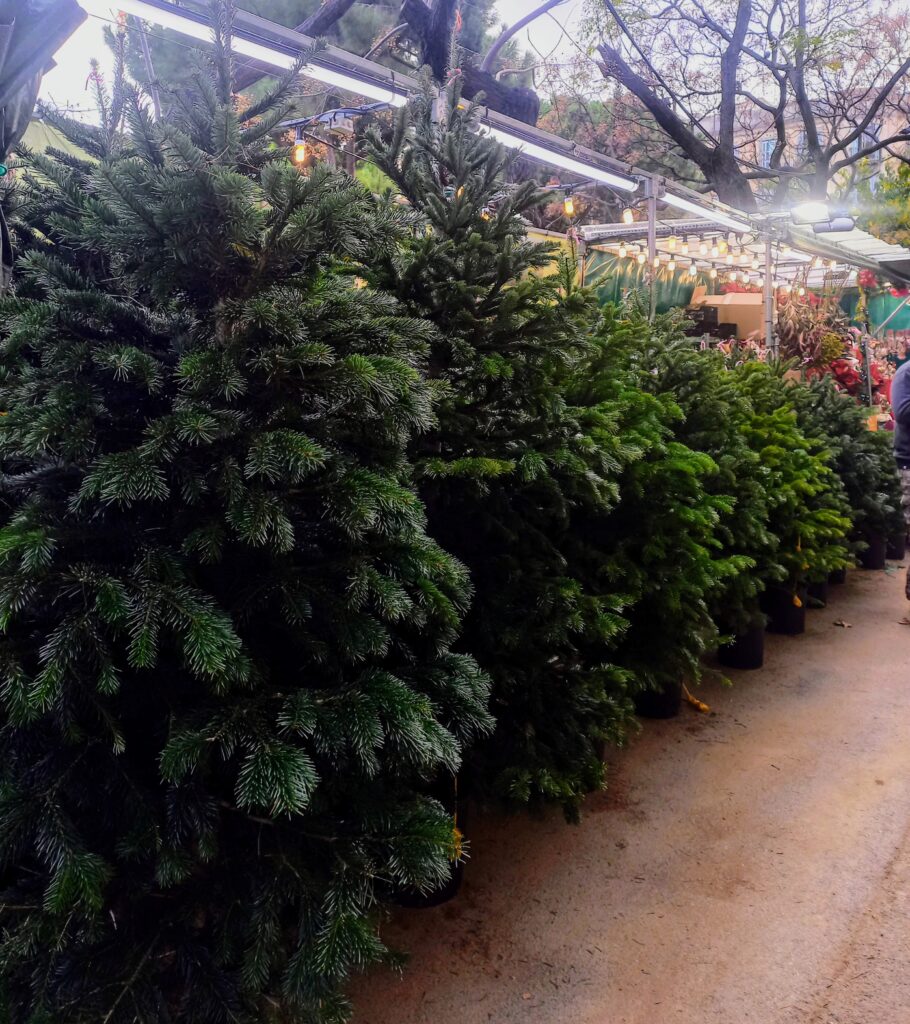
Located in Plaza Sagrada Familia, near the basilica, this Christmas market is much smaller than la Fira de Santa Llucia.
It has a good selection of natural and artificial Christmas trees. I bought an artificial one that looked quite real here a few years ago and I am still happy about it as of today.
Nadal al Port
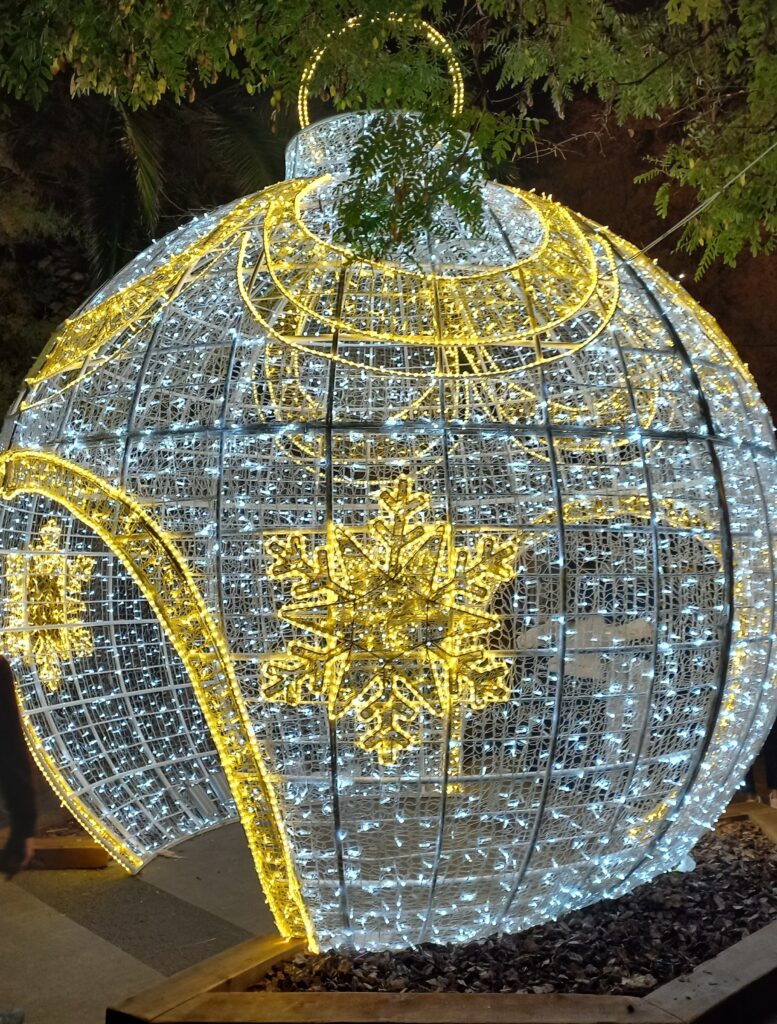
This year, I went to Nadal al Port in Moll de la Fusta for the first time. The entrance is free. The fair is set up in a nice area, on the port, near all the boats.
It has many food stalls, giant Christmas baubles for photos, a Ferris wheel, and an ice skating ring. My preferred bit of the fair is its several hot wine stands. Drinking hot wine is not part of the culture here so it is not easy to find them usually. To drink with moderation!
The pooing characters
The “caganer” or the pooper in English
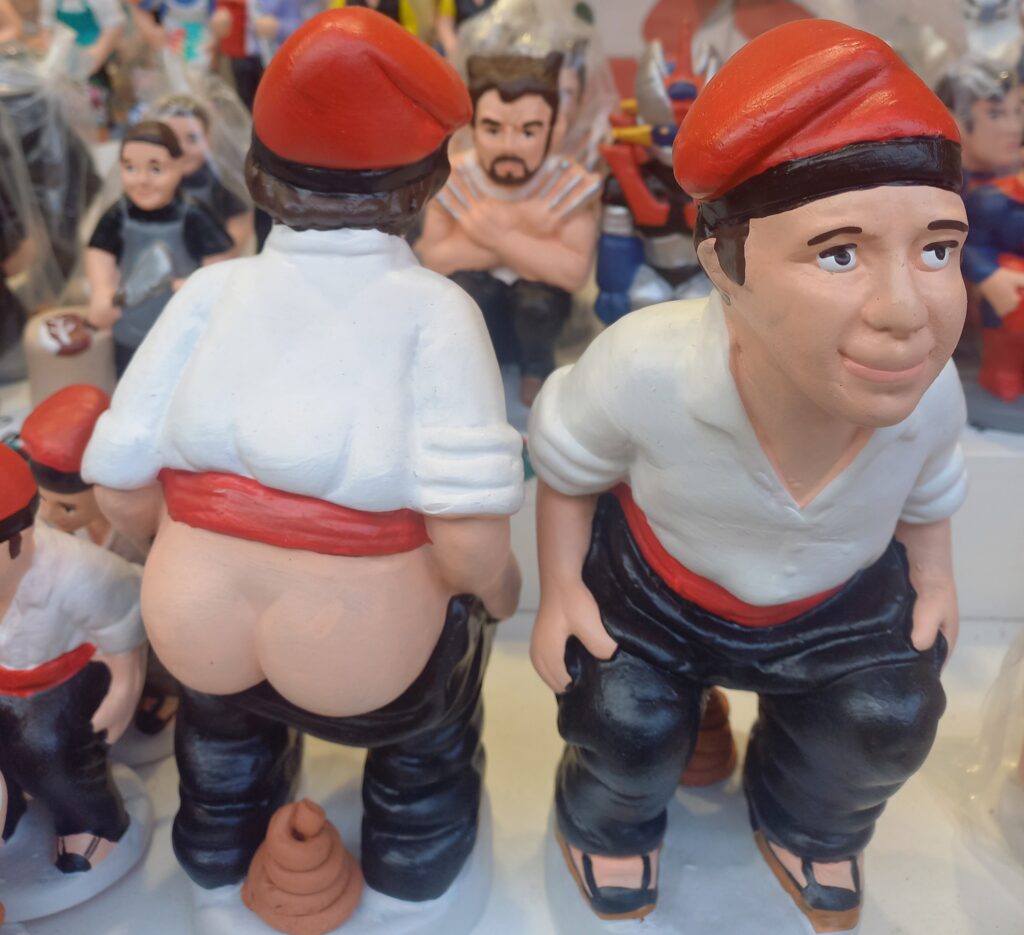
I moved to Barcelona one December. My first Christmas experience was a shock. I fell face to face with the “caganer”, the pooper in English. A typical Catalan Christmas figurine with its moons in full display, it is sold crouching and… pooing.
The traditional caganer is a peasant donning the Catalan red cap, although numerous ones represent famous people and prominent figures such as the Queen of England. I found that particular one amusing but irreverent at the same time.
An essential piece of the modern Catalan nativity scene
The caganer is an essential piece of the modern Catalan nativity scene. It is hidden in different spots of the creche and children are encouraged to find it. The exact origin of the caganer and this tradition is unknown though.
I offered a Barça player caganer to my dad as he likes football. He gave me a weird look but in Catalonia, the caganer’s feces are meant to fertilize the ground and the caganer is a symbol of good luck and happiness for the new year.
Beating up Caga Tió for gifts

The Caga Tió (the pooping log) is another popular Catalan character made out of a log. He has a warm and cheery expression, wears a Catalan red cap, and is covered with a blanket.
In the days leading up to Christmas, he should be fed for instance with stale bread, orange peels, or nuts. On Christmas eve, children sing to him with a special counting rhyme and then beat him up. After a good beating, he poops presents. Yep! You read it well. It poops presents.
In the background, the parents are hiding gifts under the cloak while the kids are out of the room – in a similar fashion to the Santa Claus concept.
Getting big gifts on Three Kings and not on Christmas day
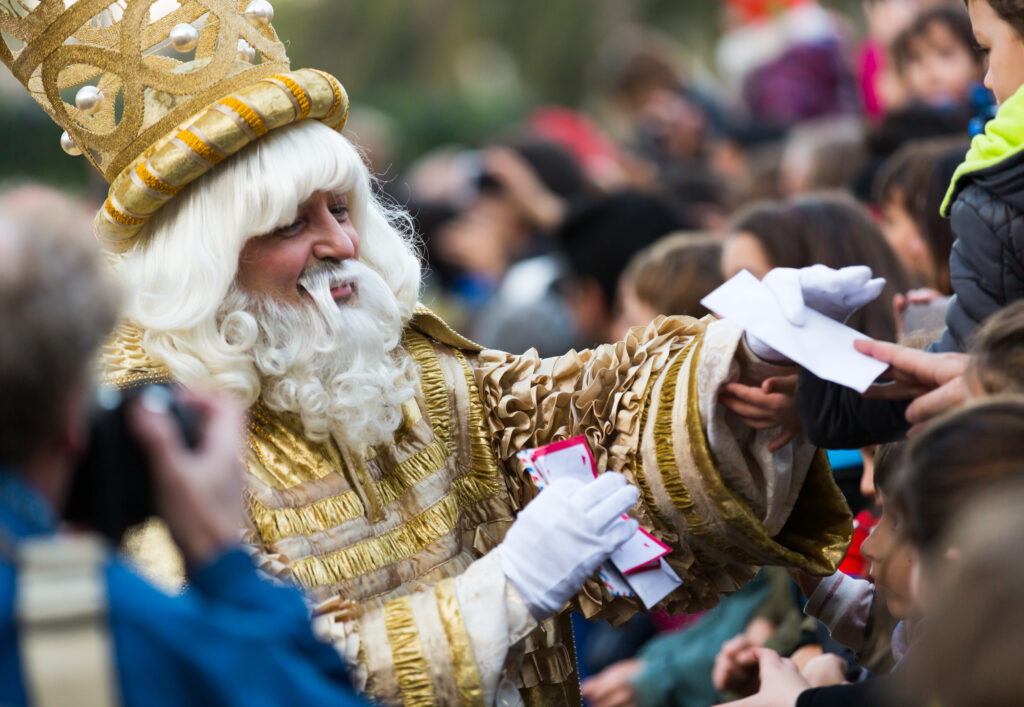
Here is another cultural shock for those getting acquainted with Spanish Christmas traditions. This particular tradition, contrary to the Caga Tió and the Caganer which are specific to Catalonia, is embraced in the entire of Spain.
In Spain, Santa does not bring gifts to kids. The Three Wise men do. Caga Tió is supposed to bring small gifts such as turron or sweets. The bigger ones are given on the 6th of January.
Typically, young children write to the three Wise Men and leave their shoes outside to be filled with gifts. Does it also remind you of another Christmas tradition from other countries?
The nativity scenes
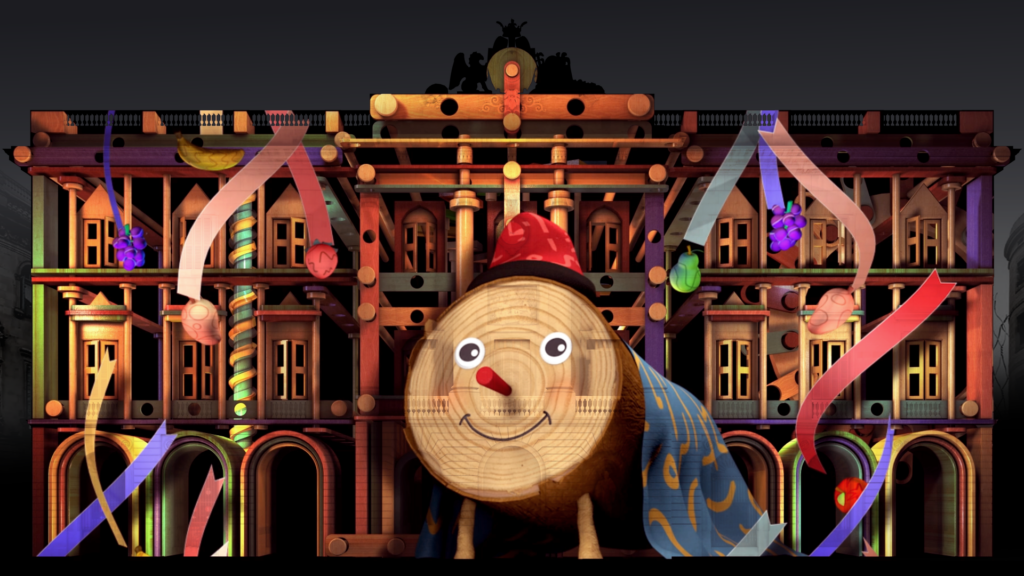
From what I have experienced in Barcelona, locals are big into nativity scenes which are called the “pessebre”. The “pessebre” depicts the birth of Jesus.
The most famous one in Barcelona is the one in Plaça de Sant Jaume. It is usually a creative installation. This year, the Nativity scene is an interactive digital video mapping on the façade of the city hall. The mapping will run until January 5th, 2023, every evening from 6 pm until 10 or 11 pm.
The nativity scene in Plaça de Sant Jaume 2022
The nativity scene will be made up of windows to show the different universes inside. Each of these scenes will represent a typical tradition of the city of Barcelona.
Anyone who wants to can participate in its design by interacting live through an application. For example, it will be possible to feed the Caga Tió or write a letter to the Three Wise Men.
The square also features a giant Christmas tree.
Link: Nativity scene in Plaça de Sant Jaume 2022
Offering Mistletoe
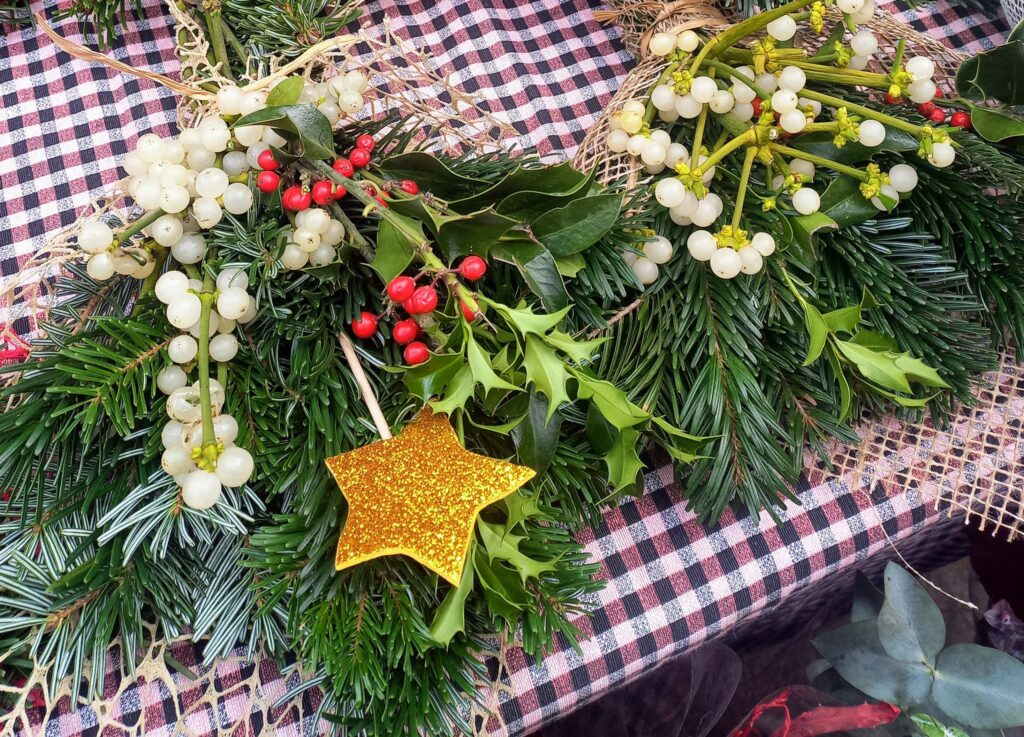
Mistletoe is a common Christmas ornament in Barcelona. They are believed to bring luck. This is why you will see many stalls selling small bouquets all around Barcelona.
The Christmas Lottery

Here is another “odd” Christmas custom: The Christmas Lottery. During the festive period, people wait in line to purchase a Christmas lottery ticket. This “tradition” is even spread to businesses. Companies, restaurants, and other organisations buy a tenth share of a lottery ticket and sell them to employees and patrons.
Sometimes, especially at work, you can experience some peer pressure because you fear that you will be left out if your colleagues get the winning ticket. As a consequence, you also buy one.
My lotto experience
I usually split the cost of my lottery tickets with a friend or a coworker. But this means the wins are also divided so you need to trust each other.
I never won a big prize. Sigh! The most I won was 20 euros which is the money I invested and returned to me. I occasionally offer a lotto ticket as a Christmas present. Who knows, they can get lucky and take home 40,000 Euros…
The ticket is not cheap. It costs 20 euros. The results of the lotto are made public on December 22nd.
The end: Merry Christmas everyone!
This is for now my experience of Christmas in Barcelona. I will update this post as I learn more about it. Merry Christmas to all of you!
